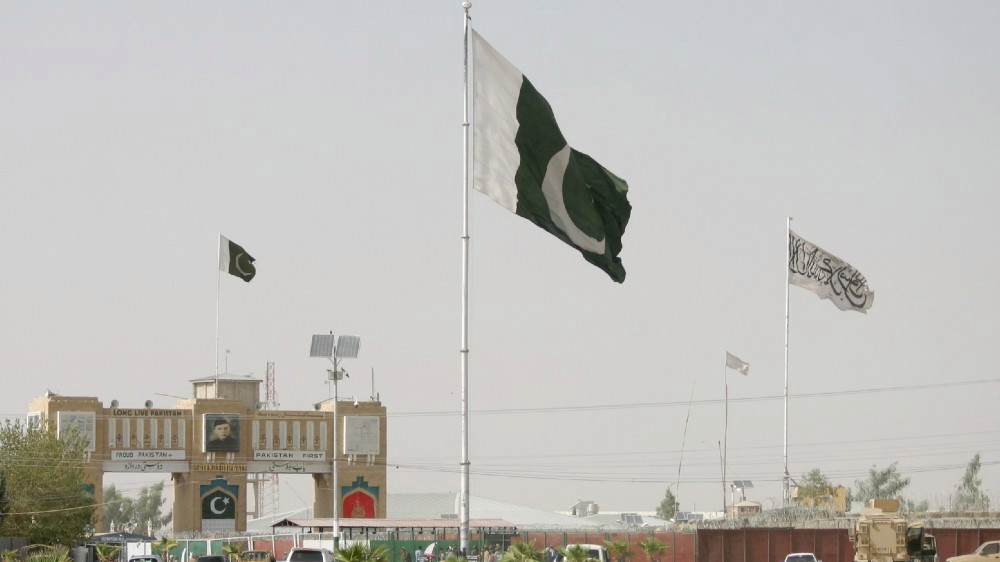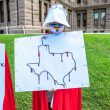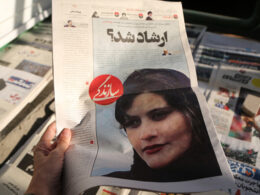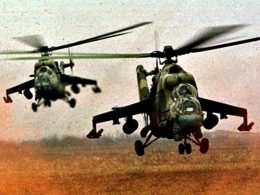By Geert Cool, Linkse Socialistiche Partij / Parti Socialiste de Lutte — our sister organisastion in Belgium
With the Taliban back in power in Afghanistan, Pakistan’s very fragile balance is in danger of being further shaken. On top of a near-bankrupt state, violence by fundamentalist groups such as Tehrik-i-Taliban Pakistan (TTP) and growing social unrest, including against China’s Belt and Road Initiative (BRI) projects, more internal instability and greater isolation from US imperialism now loom.
The uneasy position of the Pakistani regime, both of the army and of Prime Minister Imran Khan, who has turned out to be a loyal collaborator of the powerful army, has been reflected in their reactions to the Taliban takeover. On the one hand, the door was immediately opened for talks with the Taliban, a historical partner of the Pakistani army and security services. Imran Khan declared that the “chains of slavery” had been broken by the Taliban. On the other hand, the new Afghan regime has been asked to take measures against the Pakistani version of Taliban, and a new wave of refugees is openly feared. Pakistan already has 1.5 million Afghan refugees residing in the country, some for decades. The seizure of power in Afghanistan is strengthening the self-confidence of the Pakistani Taliban, not least in Pashtun areas where the border imposed by British colonialism, the Durand Line, has always been very porous.
Imran Khan announced on 26 August that the US would no longer be allowed to use Pakistani territory. “America became our ally yet kept bombing us. America carried out 480 drone strikes in our country. The heirs of those killed in the drone strikes were seeking revenge from the Pakistani government. We have decided not to allow the use of our land in the future.” He also attributed the disastrous state of Pakistan’s economy to the Afghan war. Presenting a report on what his Pakistan Tehreek-e-Insaf (PTI) government had achieved in the last three years, Imran Khan emphasised the good ties with Saudi Arabia and China. However, shifting the responsibility for all internal problems to the US, and of course, to arch-rival India, will become more difficult after the US withdrawal from Afghanistan.
New rise of violence
In recent years, the civil war in Afghanistan has spread to Pakistan. Not only in the Khyber-Pakhtunkhwa province and the tribal areas, but throughout the country violence and attacks have increased. Under pressure from US imperialism and to save its own position, the Pakistani army invaded the Swat valley in 2009 to oust the Taliban regime there. Thousands were killed and the region has never really fully recovered. This was followed by a more general offensive against Taliban forces near the Afghan border from 2014, following attacks on Karachi airport in June 2014 and a deadly attack on a school in Peshawar in December the same year.
The military operations had some effect. There was a decrease in violence in Khyber-Pakhtunkhwa and the rest of the country. The beautiful nature and historical sites of the Swat Valley subsequently attracted more tourists, bringing some economic recovery to this area where tourism is the main source of income. This recovery was put under pressure from 2020 onwards by the pandemic and the return of insecurity and violence. In addition to violent robberies, there was also a renewed growth of the Tehrik-e-Taliban Pakistan (TTP), which began to organise increasingly along the Pakistani side of the border when it feared that the Afghan Taliban would sign a peace deal as part of the US withdrawal. This led to the return of almost daily incidents: from bombs to snipers and killings. Between January and July 2020, at least 109 people were killed in such violence in Khyber-Pakhtunkhwa, according to the FATA Research Centre. The death toll is still well below the level of a decade ago, but it is again on the rise.
The increase in extremist violence forced the government of Imran Khan to take measures. However, these are particularly ambiguous. For example, the fundamentalist Islamist party Tehreek-e-Labbaik Pakistan (TLP) was banned in April this year. This followed violent protests in which two police officers were killed and 340 injured. Despite the official ban, however, the party continues to function and participated in the August elections in Pakistan-occupied Kashmir under its own name. As expected, the TLP failed to win a single seat at 5%. In a by-election in Karachi in May this year, also after the official ban, the TLP still achieved a remarkably good result. With over 10,000 votes (21.4%), it became the third largest party after the PPP and PML-N but ahead of Imran Khan’s national-ruling PTI. TLP militants continue their activities, obviously feeling empowered by the events in Afghanistan.
The fact that banning militant religious and political groups is not enough to bring peace was demonstrated in the metropolis of Karachi. There is an attempt there to push through these bans, but the violence remains omnipresent. Against a background of shortages on all domains, the step from fundamentalist religious/political violence to street crime is not a big one. In the first three months of this year, there were at least 98 murders, mostly during street crime and robberies. In those three months, 1055 cases of motorbike theft under armed threat were reported. There was also a return of kidnappings for ransom. Officially banning fundamentalism and violence will not put an end to it. It is a matter of tackling its social breeding ground. Imran Khan’s government however has no answer to this.
Bankrupt state
The Pakistani state is as good as bankrupt. It is anxiously awaiting the USD 2.75 billion that the IMF will give the country as part of the 650 billion drawing rights. That should keep the government afloat temporarily. However, the debt burden and the lack of income are problematic. No less than 36% of the budget goes to interest on debts. After that, there is hardly any money left for health care or education.
For income, the country has become increasingly dependent on contributions sent by Pakistani migrants from abroad to their families. “The biggest asset of our country is the Pakistanis living abroad, who are sending remittances from abroad,” the prime minister said. This says a lot about the disastrous state of the economy.
Inequality in Pakistan is extremely high. The number of unemployed has risen to 8.5 million. Many families spend more than half of their income on food. The increase in the price of food is therefore having a disastrous effect. General inflation has fallen below 10% in recent months, but for food it remains higher: up 14.8% year-on-year between May 2020 and 2021. According to the Pakistan Bureau of Statistics, 16.4% of households are food insecure, exacerbated by Covid-19 and job losses and cuts. This figure is a substantial underestimate. According to Najy Benhassine of the World Bank, 68% of the population cannot afford a healthy diet.
The government is largely dependent on international loans. Credit from the IMF comes with conditions, which further pushes up the prices of basic products. In recent years, cuts have been made on just about everything. This causes shortages in all areas. Tackling the pandemic was almost impossible. There are hardly any resources for the health sector, which is dominated by private companies. All Pakistani states had to drastically increase the resources for health as a result of the pandemic, but even increases of 30% and more are not enough. This once again becomes clear now that the number of Covid-19 infections is rising again.
A change in geopolitical relations after the US withdrawal from Afghanistan will not be without consequences for Pakistan. Earlier, anonymous government sources in Pakistani media openly admitted that the government is using “its geostrategic advantages to get concessions from the IMF in the form of more loans.” What if those geostrategic advantages crumble?
Regional relations
The departure of US troops and the seizure of power by the Taliban were widely portrayed as a defeat for India, which invested heavily in the previous Afghan government, and a victory for Pakistan. However, it seems that the situation is more complex. It is true that the Pakistani army and the Taliban have always maintained close ties, but there is noise on the line. The Taliban in Kabul is trying to keep Indian investment — $3 billion since 2001 — on board, even if it strains relations with Pakistan, including the Pakistani Taliban.
The Taliban hope for a benevolent attitude from the Chinese regime. However, the latter already has its hands full with Pakistan’s Belt and Road projects. Inadequate infrastructure, power cuts, anti-Chinese violence, uncertainty over loan repayments and protests by fishermen and others around the port of Gwadar in Balochistan are putting pressure on Chinese investments. The adventurous nature of operations in Pakistan will not help Chinese enthusiasm for Afghanistan. Like the Pakistani regime, both China and Russia are also concerned about the impact of the Afghan Taliban on fundamentalist Islamists in their own country or region.
After the terrorist attacks of 11 September 2001, Musharraf’s Pakistani regime did not hesitate long to respond to the US ultimatum and formally spoke out against Al Qaeda and the then Taliban regime in Afghanistan. However, it continued to gamble on two horses with both support to the Taliban and the US troops fighting the Taliban. In recent times, the regime tried to adopt an ambiguous stance towards China and the US playing out these powers against each other. A reduction in Pakistan’s geo-strategic importance after the US withdrawal from Afghanistan may put pressure on this opportunistic policy. Indeed, it will affect both US and Chinese attitudes towards the country.
Social unrest
In recent years, the organised labour movement has been under severe pressure due to the country’s economic problems, the army’s control over the economy, instability and violence. Trade unions are historically weak with little presence in the private sector. Nevertheless, there is potential for struggle. At the end of August, for example, there was a strike by bus drivers in Lahore for higher wages and job security. In the energy sector, there were union actions against the threat of privatisation and for higher wages. That rising prices can lead to social unrest is understood by the authorities. In recent months, minimum wages have been increased to 20,000 Rupees per month (about 100 euros) and in the province of Sindh to 25,000 Rupees (125 euros). Attempts by the bosses to undercut these minimum wages lead to the potential for social unrest.
At the same time, there is growing attention to women’s rights, with protests against rape. The international women’s movement is having an effect in Pakistan. The rape of a young mother along a highway a year ago led to a storm of protest. Recently, there was a case of a TikTok user who became the victim of a gang rape in Lahore. The government has absolutely no idea how to respond to violence against women. Imran Khan stated that “Women wearing few clothes impact men unless they are robots.” After the rape of a TikTok user he declared that smartphones contribute to an increase in violence. The government doesn’t get further than victim-blaming, which of course further fuels the protest.
Imran Khan also spoke in a condescending way about the position of women in Afghanistan. He emphasised that for the time being we have to “believe the Taliban. If the Taliban do not stick to their word, it will be seen at that time.” He added that Europe “is only concerned about women in Afghanistan,” while women’s rights were never obtained from outside. It is, of course, easy to point to the hypocrisy of European and American political leaders: they have no problem with the women-unfriendly Saudi regime or, in Afghanistan, with warlords who, in terms of women’s rights, were not really different from the Taliban. Nevertheless, the Taliban regime is a real threat to women, young people, oppressed minorities, workers and all those who dare to speak out for their rights and even just for a better future. The Pakistani Government rather looks at the conservative fundamentalists in power in Kabul than at the fate of women in Afghanistan, or the fate of women who are fighting against violence and for their rights in Pakistan.
Another subject that can lead to tensions and protests is the national question. Against the backdrop of generalised shortages and poverty, contradictions are not diminishing but, on the contrary, increasing. The PTI can pretend to have the situation in Pakistan-occupied Kashmir under control, especially after it won the regional elections there in August. However, the results of those elections have, as always, been disputed. Meanwhile, there are centrifugal forces with growing differences in the political situation in different parts of the country (Punjab, Sindh, Balochistan, Kashmir and Gilgit-Baltistan, Khyber-Pakhtunkhwa and the tribal areas). Generally, Kashmir is only used by the establishment to advance nationalist war propaganda against India. Modi’s Indian regime is doing just the same about Kashmir. Meanwhile, a time bomb on the national question is developing in Kashmir, among other places.
Can the labour movement make a difference?
In the present circumstances, the situation of the working class and the poor farmers may seem hopeless. Yet there is a great tradition of organisation and struggle by the working class and the poor peasants for social change. If the right-wing dictatorship of Zia ul Haq in the 1980s was so repressive against the left and the trade unions, it was because it recognised the danger after the mass movements of the late 1960s and early 1970s. A wave of factory occupations and protests for socialist change rocked the system. The response of the army and the capitalists, supported by imperialism, was repression and harsh austerity. This opened the way for the strengthening of religious fundamentalism, which became big in the Koranic schools that became popular due to the lack of sufficient resources for public education. It is also in these schools that many later Afghan Taliban fighters were educated.
The workers and the oppressed need to connect to the traditions of struggle in Pakistan and can draw inspiration from movements elsewhere in the world, from workers’ protest and peasants’ action in India to movements in Iran, to the international women’s movement, climate change protest … Workers and youth need to organise themselves into a revolutionary organisation as part of the struggle for an international socialist alternative to get rid of the elements of barbarism that dominate their lives today.












